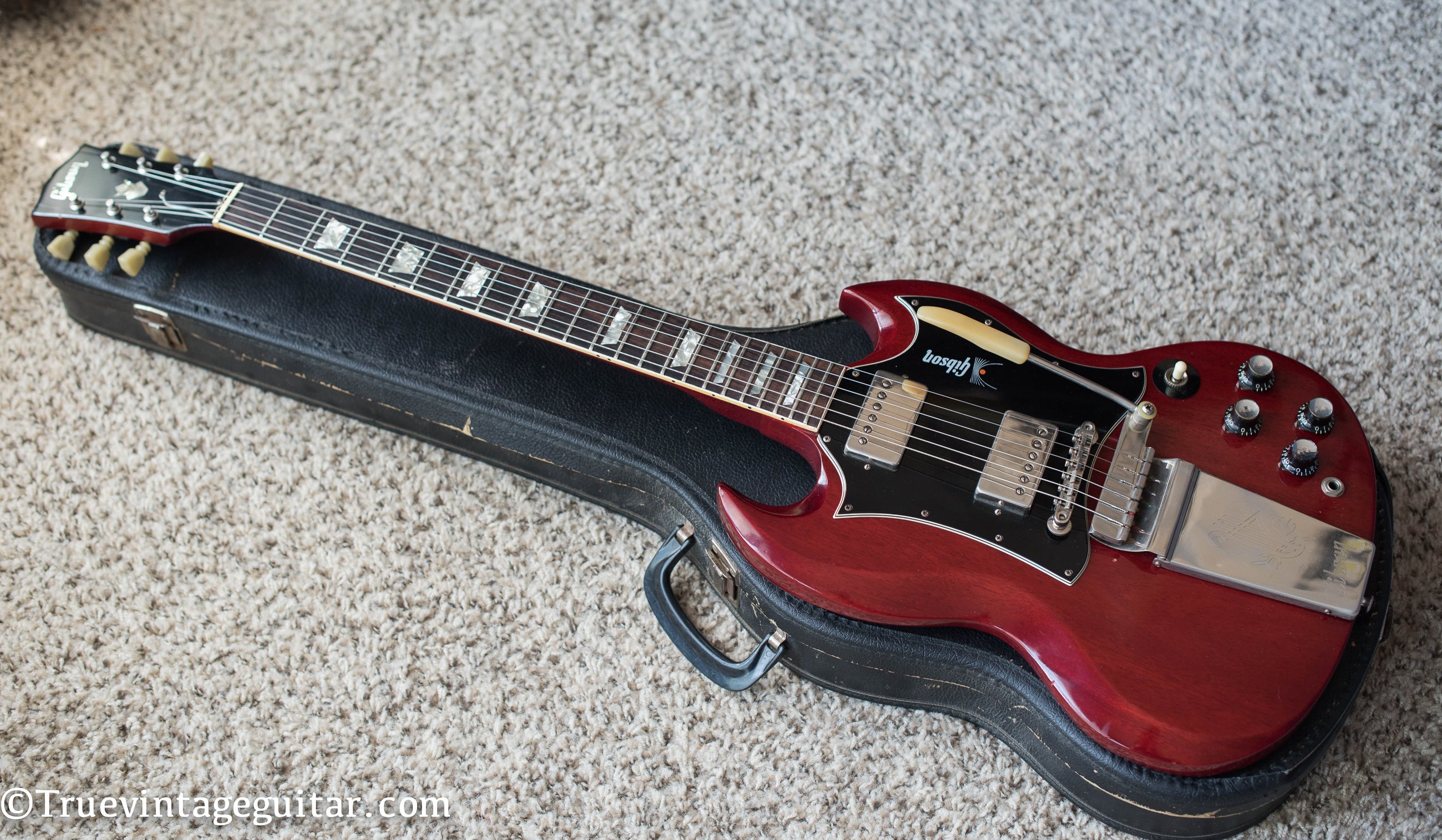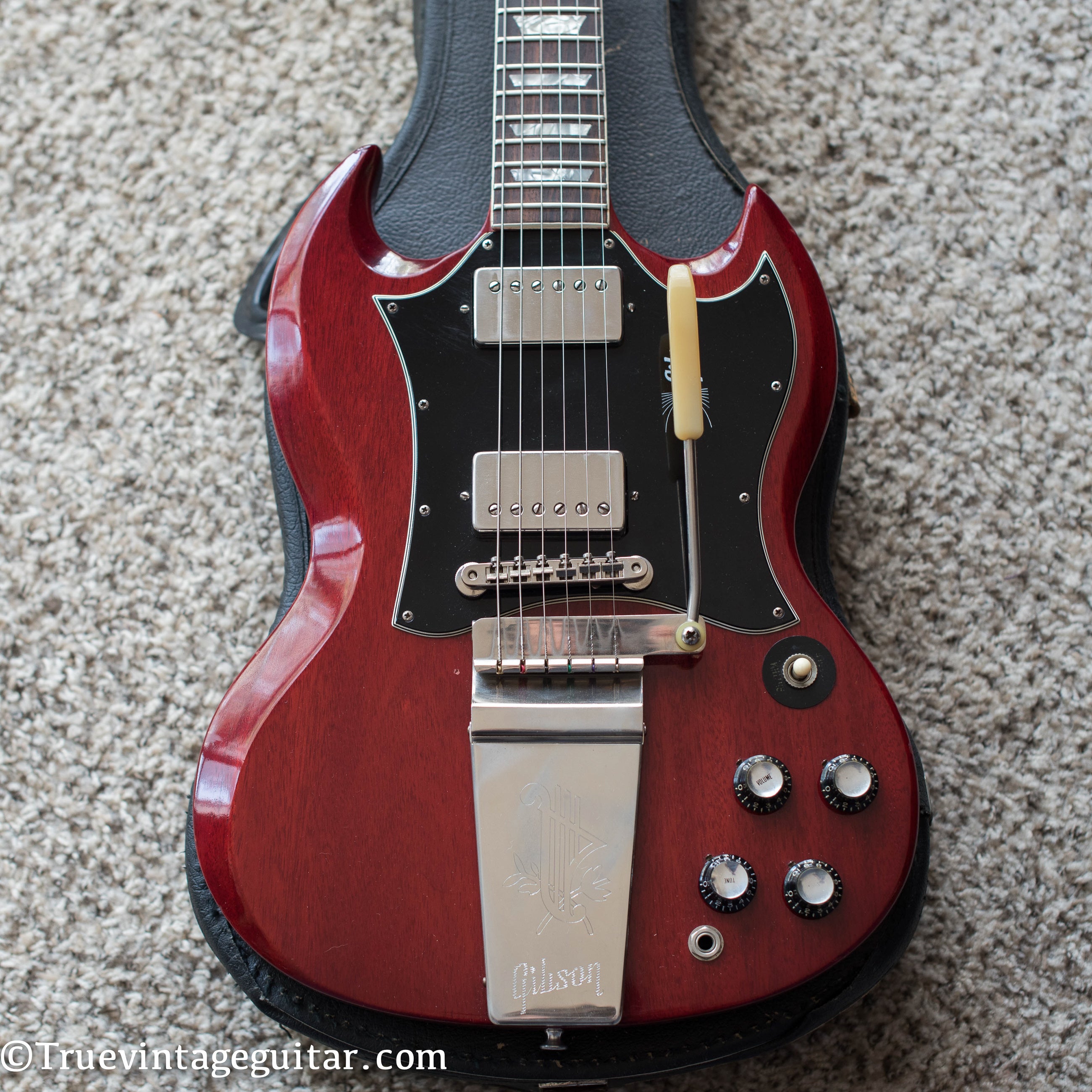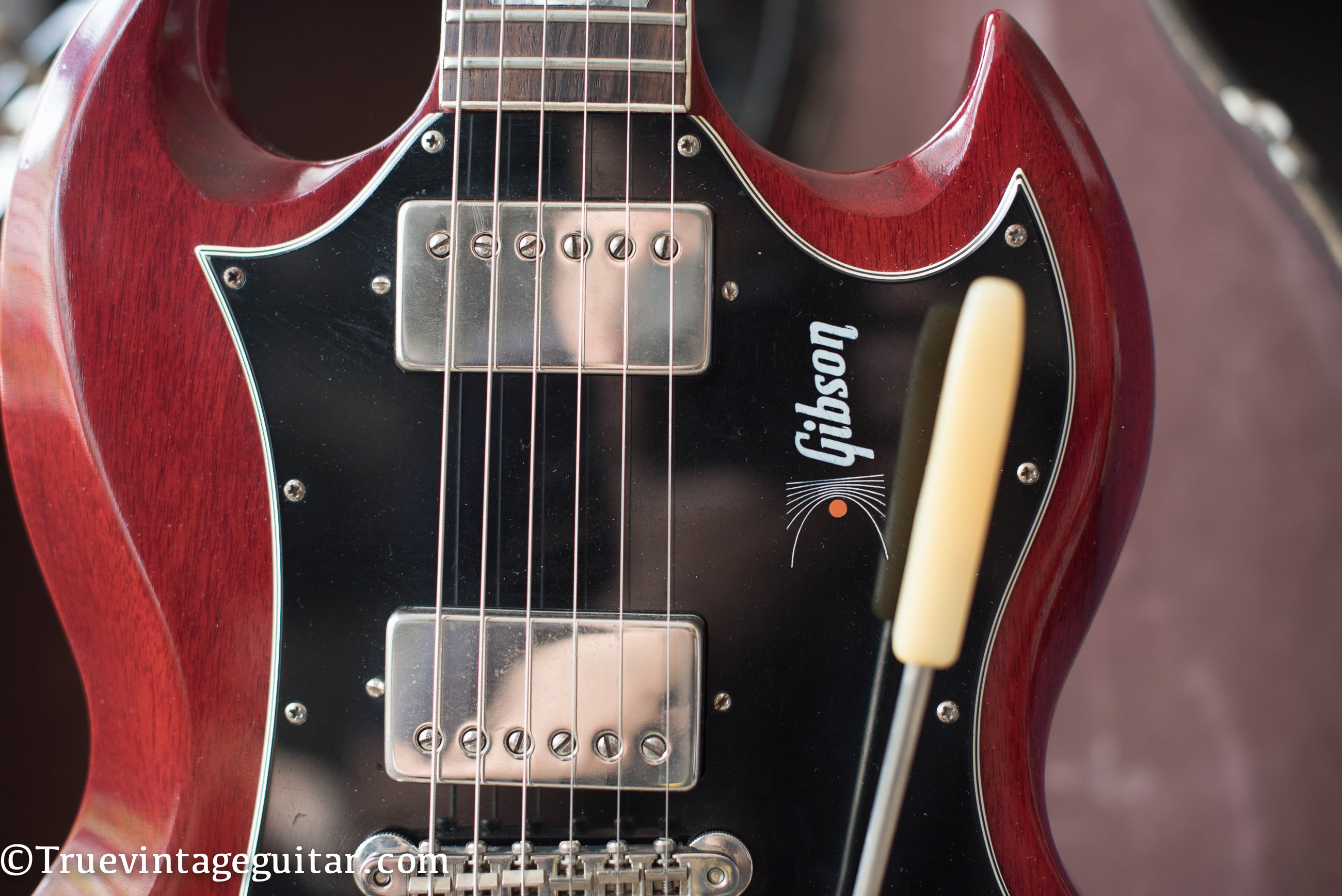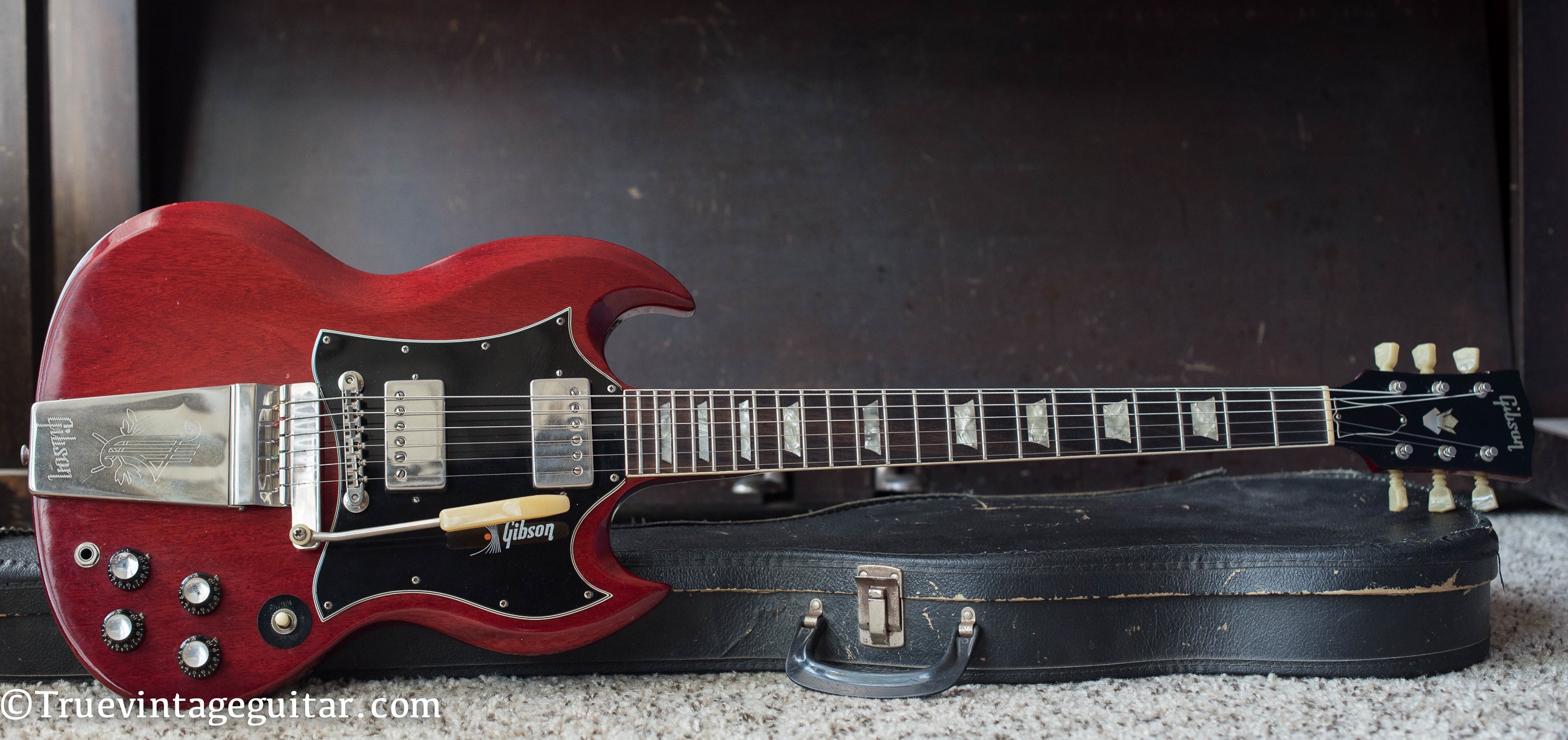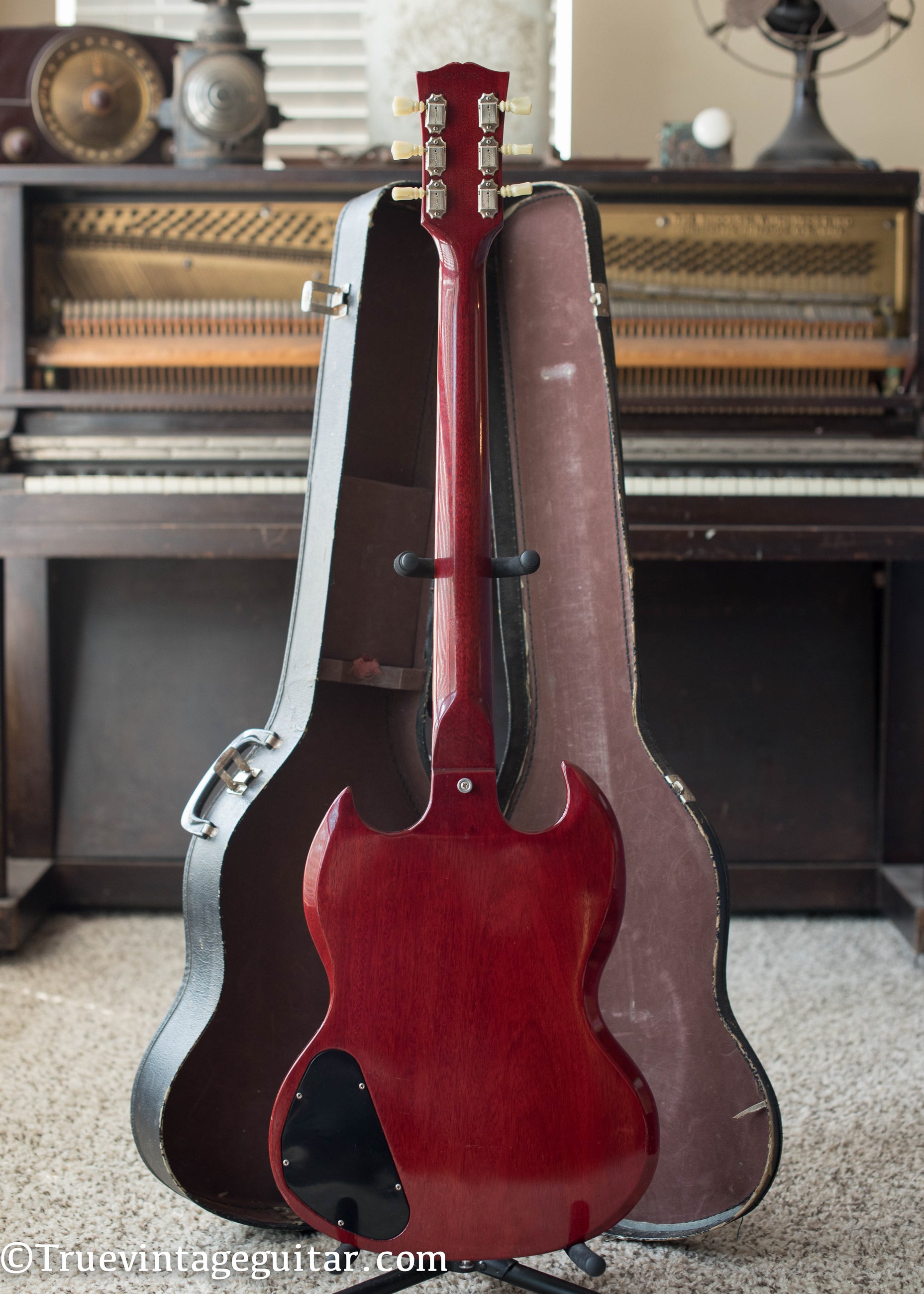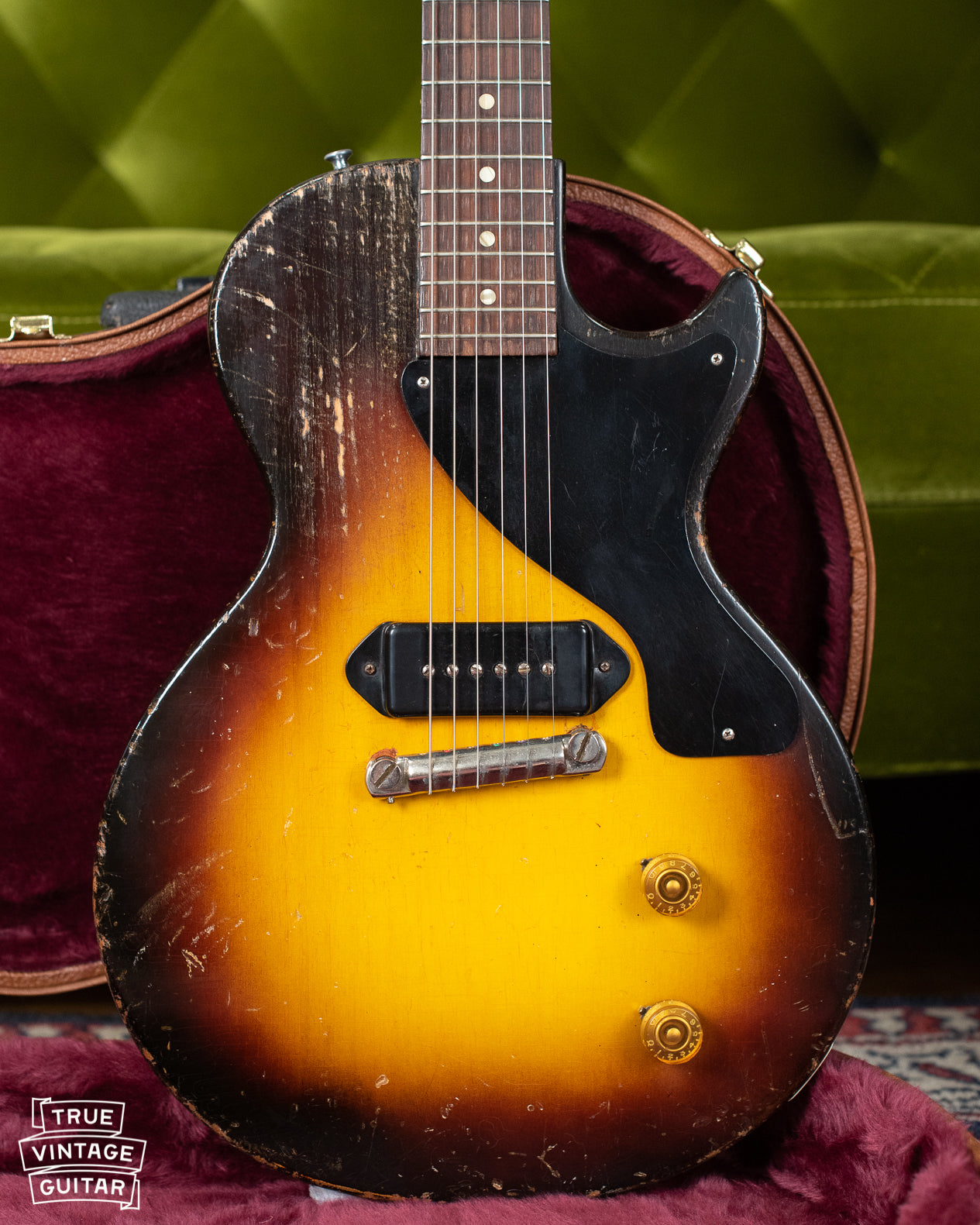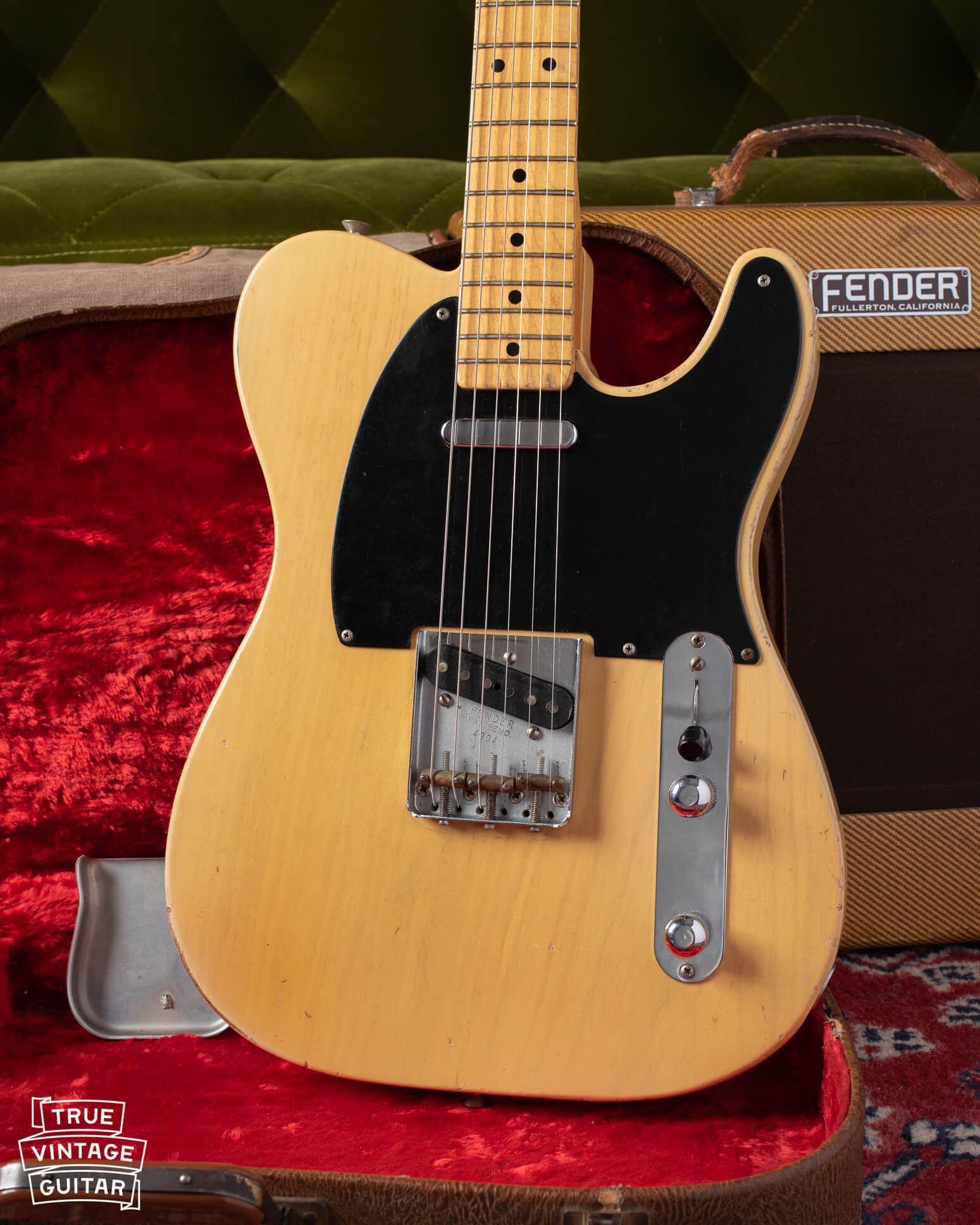This vintage 1968 Gibson SG Standard electric guitar came through the shop a few years ago. It's one of the most interesting Gibson SG guitars I've seen in that it appears to be a body made in about 1968 but many of the metal parts date to 1964. It had single line Kluson tuners, nickel parts, ABR-1 bridge with nickel saddles, reflector knobs, and potentiometer codes indicating mid 1964. I'm always a buyer for vintage Gibson guitars but I especially love the SG models. Please contact me here to sell a vintage Gibson guitar.
If you're looking for help with Gibson guitar dating and serial numbers, check out How to date Gibson guitars.
Check out a few other Gibson SG guitars that have come through the shop:
Gibson’s SG body style debuted in 1961 as the next version of the Les Paul signature model. It wasn’t until 1963 that the “Les Paul” graphic was removed from the headstock in favor of the classic “Crown” inlay and it was renamed “SG Standard.” The SG featured a solid Mahogany body and neck with two of Gibson’s popular humbucking pickups. Other important features included a neck that joined the body at the 19th fret and two cutaways that allow full access to the entire fretboard. The Standard model also came with fancy trimmings including a bound neck, trapezoid fretboard inlays, Lyre vibrola and the Gibson logo inlaid in pearl on the headstock. The timeless SG body shape went in to production in 1961 and has remained in production in some form ever since.
This 1968 Gibson SG Standard has survived in wonderful, almost unplayed condition. 1968 seems to be the only year that the logo was applied to some of the pickguards in this fashion (check out this 1968 Gibson ES-335 with similar logo on the pickgard). We've priced this guitar attractively since it has some changed parts and a non-invasive truss rod repair. The tuning keys, bridge, volume/tone knobs (3 are old and one is new), case, and wiring harness seem to date to about 1964 but appear to be Gibson parts. It's likely that the guitar's truss rod anchor slipped early on in its life rendering difficult to play. Jason Burns (Burnsrepair.com) installed a new anchor so now the guitar plays perfectly with a straight neck and full original fret height.
